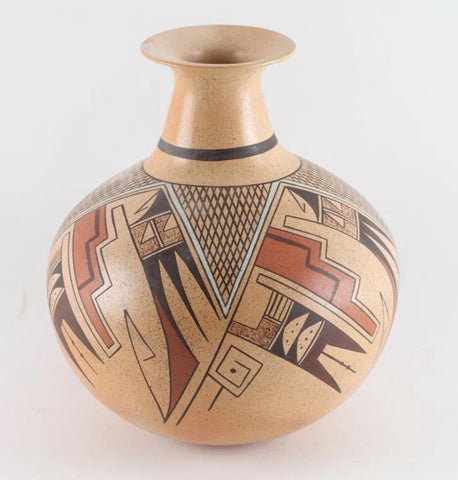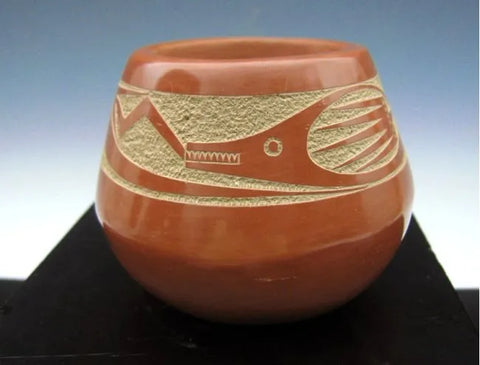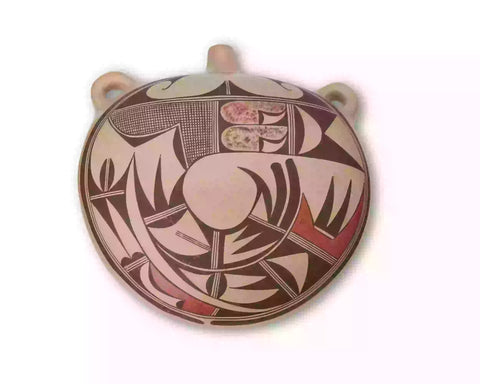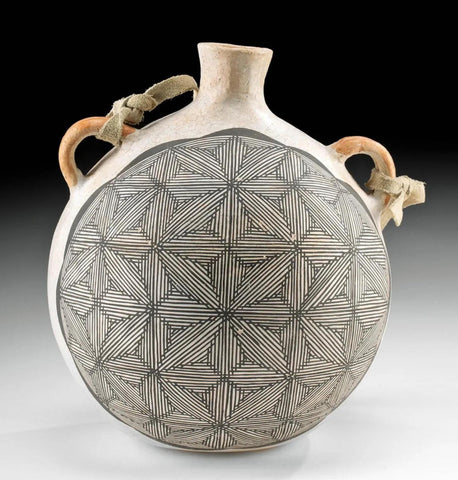Home
>
Native American Indian Pottery
>
Native American Acoma Polychrome Pottery Bowl, by Barbara and Joseph Cerno, Ca 1980, #1608 SOLD
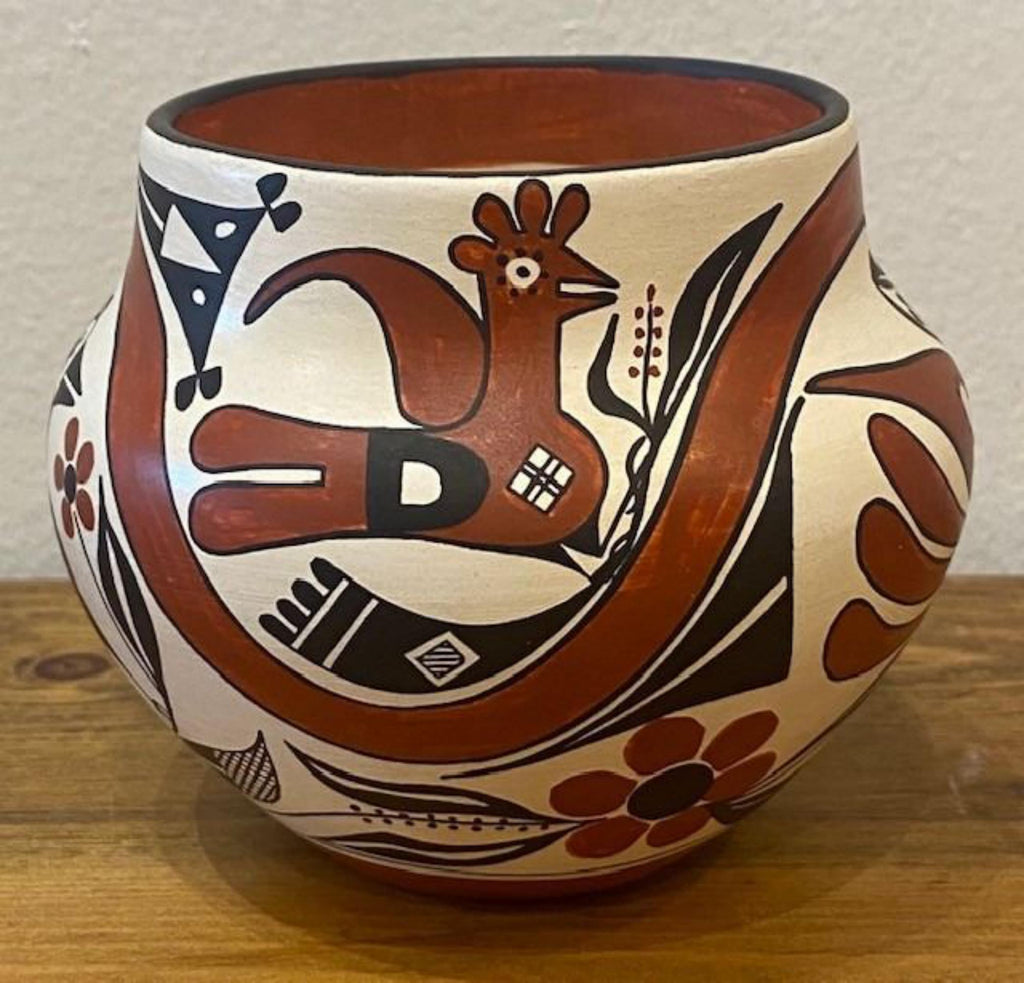
Native American Acoma Polychrome Pottery Bowl, by Barbara and Joseph Cerno, Ca 1980, #1608 SOLD
$ 1,750.00
What a great day it is. Just received a great new piece. It is beautiful Vintage Acoma Polychrome Pottery Bowl, by Barbara and Joseph Cerno, Ca 1980, #1608. Details follow below.
Description: Native American Acoma Polychrome Pottery Bowl, by Barbara and Joseph Cerno, Ca 1980, #1608
Dimensions: 3 1/4-inches tall by 3 3/4-inches wide
Condition: Excellent
Some background on Barbara and Joseph Cerno:
"Barbara Cerno was born October 20, 1951. Joseph Cerno was born January 30, 1947."
"They have been making traditional Acoma pottery since their late teens... well over 40 years. Annie Creno was their teacher."
The Cerno's have won awards at every major Southwest Pottery show including Santa Fe Indian Market, The Gallup Ceremonials and The New Mexico State Fair."
"The Cerno's are considered among the finest living Acoma potters today. Their pottery is extremely thin walled (which is a major part of the challenge for many Native American potters). The result of that is a wonderful ring that seems to last forever when you gently tap it."
"The designs are very well balanced and executed... simply beautiful works of the Acoma pottery.It should be noted too that the Cerno's never mass produced their pottery but rather focused on each pot as a work of art." (Source: Pueblopottery)
Some background on Pueblo pottery making follows:
“Pueblo pottery is made using a coiled technique that came into northern Arizona and New Mexico from the south, some 1500 years ago. In the four-corners region of the US, nineteen pueblos and villages have historically produced pottery. Although each of these pueblos use similar traditional methods of coiling, shaping, finishing and firing, the pottery from each is distinctive.
Various clay's gathered from each pueblo’s local sources produce pottery colors that range from buff to earthy yellows, oranges, and reds, as well as black. Fired pots are sometimes left plain and other times decorated—most frequently with paint and occasionally with applique. Painted designs vary from pueblo to pueblo, yet share an ancient iconography based on abstract representations of clouds, rain, feathers, birds, plants, animals and other natural world features.
Tempering materials and paints, also from natural sources, contribute further to the distinctiveness of each pueblo’s pottery. Some paints are derived from plants, others from minerals. Before firing, potters in some pueblos apply a light colored slip to their pottery, which creates a bright background for painted designs or simply a lighter color plain ware vessel. Designs are painted on before firing, traditionally with a brush fashioned from yucca fiber.
Different combinations of paint color, clay color, and slips are characteristic of different pueblos. Among them are black on cream, black on buff, black on red, dark brown and dark red on white (as found in Zuni pottery), matte red on red, and poly-chrome—a number of natural colors on one vessel (most typically associated with Hopi). Pueblo potters also produce un-decorated polished black ware, black on black ware, and carved red and carved black wares.
Making pueblo pottery is a time-consuming effort that includes gathering and preparing the clay, building and shaping the coiled pot, gathering plants to make the colored dyes, constructing yucca brushes, and, often, making a clay slip. While some Pueblo artists fire in kilns, most still fire in the traditional way in an outside fire pit, covering their vessels with large potsherds and dried sheep dung. Pottery is left to bake for many hours, producing a high-fired result.
Today, Pueblo potters continue to honor this centuries-old tradition of hand-coiled pottery production, yet value the need for contemporary artistic expression as well. They continue to improve their style, methods and designs, often combining traditional and contemporary techniques to create striking new works of art.” (Source: Museum of Northern Arizona)
Related Products
Sold out
Sold out






